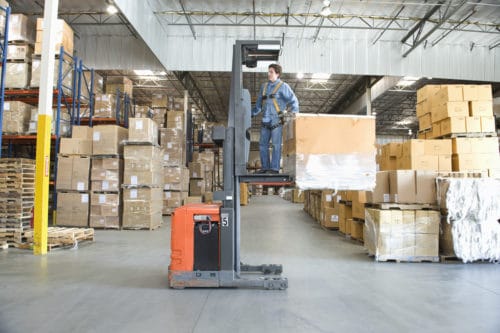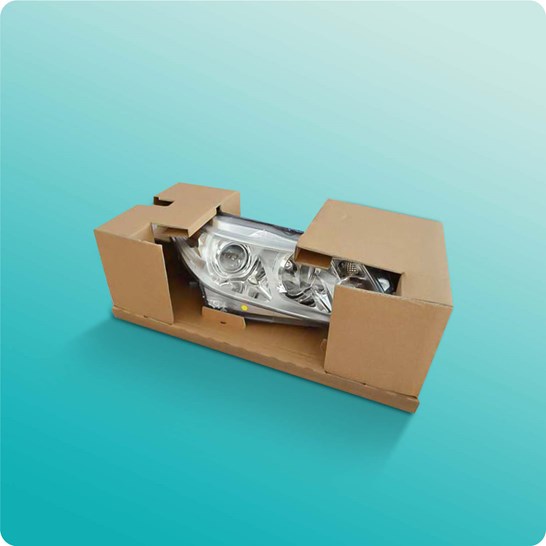Optimum Protection: Industrial Packaging Solutions Tailored for Success
Optimum Protection: Industrial Packaging Solutions Tailored for Success
Blog Article
Efficient Industrial Recycling Solutions for Lasting Product Packaging: A Comprehensive Overview
In today's progressively environmentally-conscious world, the demand for lasting packaging options has actually never ever been higher. To satisfy this need, services throughout sectors are proactively looking for efficient commercial recycling remedies. Browsing the facility landscape of sustainable packaging can be challenging without a thorough overview. That's where this comprehensive overview on reliable industrial recycling remedies for lasting product packaging is available in. By exploring vital areas such as packaging material choice, creating for recyclability, carrying out recycling infrastructure, collaborating with reusing companions, and tracking and determining recycling success, this overview will certainly outfit you with the expertise and devices necessary to make informed choices and drive favorable adjustment within your company. Whether you're a packaging professional, sustainability supervisor, or simply thinking about the topic, this guide will certainly give useful insights and strategies to aid you browse the world of lasting packaging.
Product Packaging Product Selection
The choice of packaging products plays a critical role in guaranteeing the sustainability of industrial recycling services. The choice of materials is key in reducing ecological impact and taking full advantage of recycling performance when it comes to lasting packaging. Choosing the best materials can help in reducing waste generation, save sources, and promote a round economy.
One important variable to take into consideration in product packaging product option is recyclability - processing company. Materials that can be quickly reused and incorporated back into the production cycle are favored. Products like cardboard, paper, glass, and particular types of plastics can be recycled numerous times without shedding their quality. On the other hand, products that are tough to recycle, such as mixed plastics or non-recyclable compounds, can produce challenges for the reusing procedure and may finish up in burners or landfills.
Another factor to consider is using sustainable and biodegradable products. Packaging made from renewable energies, such as plant-based plastics or biopolymers, can help in reducing dependency on nonrenewable fuel sources and minimize climate modification. In addition, biodegradable materials damage down naturally over time, decreasing the buildup of waste in landfills.
In addition, the weight and quantity of product packaging materials must be minimized to decrease transport expenses and power intake. Light-weight materials not only call for fewer sources throughout production but additionally add to lower carbon emissions throughout transport.
Creating for Recyclability
Packaging designers need to focus on the use of products that are extensively approved for recycling and have established reusing frameworks. Products such as glass, aluminum, and certain kinds of plastic, like Pet dog and HDPE, are generally reused and must be chosen over materials that are expensive or difficult to reuse.
An additional crucial factor to consider in creating for recyclability is the elimination of unneeded elements or materials. By decreasing the number of layers, finishes, and additional parts, product packaging can be made easier and easier to reuse. Furthermore, developers need to aim to reduce making use of blended products, as they can complicate the reusing process.

Implementing Recycling Facilities
Reliable application of recycling framework is vital for the success of industrial reusing solutions. Without appropriate framework in position, the reusing process ends up being inadequate and inefficient, preventing the overall objective of lasting packaging.
To apply recycling facilities properly, several essential factors need to be taken into consideration. Firstly, there must be an efficient collection system that assists in the splitting up and collection of recyclable materials. This can include assigned reusing bins in public areas, in addition to partnerships with waste administration firms for curbside pickup and sorting.
When collected, the recyclable materials need to be moved to recycling facilities in a timely way. This calls for reliable logistics and transport networks, making sure that the products reach the ideal facilities without delay.
At the reusing centers, progressed sorting and handling modern technologies should be in place to separate various sorts of products effectively. This includes making use of automated arranging makers, optical scanners, and hand-operated sorting techniques.
Moreover, there ought to be a robust market demand for recycled materials. This can be accomplished with cooperations with suppliers and industries that make use of recycled products in their production procedures. Producing a secure market for recycled materials incentivizes the reusing sector and advertises the round economic climate.
Teaming Up With Recycling Allies

One secret element of working together with reusing companions is the establishment of clear communication networks. It is necessary to establish open lines of interaction to assist in the exchange of information, updates, and responses. This enables both parties to stay notified about the progression of recycling campaigns and attend to any challenges or concerns that may emerge.
Furthermore, collaboration can include joint efforts in carrying out and designing recycling programs. Recycling companions can offer beneficial understandings and assistance in creating effective collection systems and identifying one of the most suitable recycling modern technologies. By interacting, companies and reusing partners can enhance the reusing procedure and minimize waste.
Additionally, cooperation can expand past the functional facets of recycling. It can additionally encompass campaigning for and education and learning efforts. By signing up with pressures, businesses and recycling companions can raise understanding about the importance of reusing and promote the fostering of lasting packaging techniques amongst consumers and other stakeholders.
Monitoring and Measuring Recycling Success
To make certain the performance of commercial reusing services and the accomplishment of lasting product packaging goals, it is essential for organizations and their recycling companions to establish an extensive system for monitoring and measuring recycling success (industrial packaging solutions). Tracking and gauging recycling success allows services to analyze the impact of their reusing initiatives, identify locations for renovation, and set purposeful targets for future progression
One way to track recycling success is with the use of data collection and evaluation tools. By gathering data on the amount of product packaging waste created, the percent of waste that is reused, and the sorts of materials being recycled, businesses can acquire important insights into their reusing efficiency. This data can then be evaluated to identify trends, patterns, and locations of inadequacy.
Another crucial element of tracking and measuring reusing success is establishing standardized and clear metrics. This allows businesses to contrast their performance against market criteria and track their progress with time. Metrics such as recycling rates, waste diversion prices, and greenhouse gas exhausts can supply a quantitative measure of a business's reusing success.

Conclusion
Finally, carrying out efficient industrial recycling services for lasting product packaging needs careful factor to consider of product packaging material option, creating for recyclability, executing reusing facilities, collaborating with recycling companions, and tracking and gauging recycling success. By incorporating these methods, services can add to an extra sustainable and environmentally-friendly technique to packaging, decreasing waste and advertising the circular economy.
By exploring vital areas such as packaging material option, creating for recyclability, implementing reusing infrastructure, collaborating with reusing partners, and tracking and gauging recycling success, this guide will furnish you with the expertise and tools essential to make informed choices and drive positive modification within your company. Packaging designers need go to my site to focus on the usage of materials that are commonly approved for recycling and have actually developed recycling facilities.Partnership with recycling companions is their website crucial for the effective application of industrial reusing services and the accomplishment of lasting packaging goals. By joining forces, services and reusing companions can increase awareness regarding the relevance of recycling and promote the fostering of sustainable product packaging techniques amongst customers and other stakeholders.
By accumulating data on the quantity of product packaging waste produced, the percentage of waste that is recycled, and the types of products being reused, companies can gain important understandings into their recycling efficiency.
Report this page